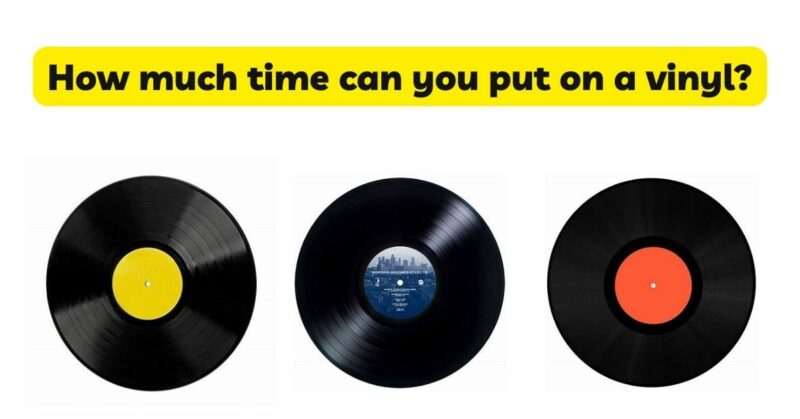Vinyl records have long been cherished for their warm, rich sound and nostalgic appeal. As a vinyl enthusiast, understanding the limits of playtime on a record is essential to maintain its integrity and ensure a long lifespan. In this article, we will explore the factors that influence the duration of playtime on a vinyl record, considerations for record wear, and best practices for preserving the quality of your vinyl collection.
- Record Wear and Groove Damage:
Vinyl records are prone to wear and groove damage with each play. The act of a stylus tracking the grooves causes friction, leading to gradual erosion of the vinyl material. The more a record is played, the greater the potential for groove wear, surface noise, and deterioration of sound quality.
- Vinyl Material and Record Thickness:
The durability of a vinyl record depends on the quality of the vinyl material and its thickness. Generally, records pressed with higher-quality vinyl and thicker grooves tend to withstand more playtime before noticeable wear. However, it is important to note that even the highest quality records are not immune to degradation over time.
- Stylus Quality and Proper Setup:
The quality and condition of the stylus and turntable setup also play a crucial role in the longevity of a vinyl record. A well-maintained, properly aligned stylus minimizes excessive wear on the grooves, preserving the record’s lifespan. Regular stylus cleaning and replacement when necessary are important for optimal performance and to minimize potential damage.
- Record Cleaning and Maintenance:
Regular cleaning and maintenance practices significantly impact the lifespan of a vinyl record. Dust, dirt, and debris can accumulate on the surface and in the grooves, causing increased friction and potential damage during playback. Employing proper cleaning techniques, such as using a carbon fiber brush or record cleaning kit, helps minimize the accumulation of contaminants and ensures optimal playback quality.
- Playing Time and Rotation:
The duration of playtime on a vinyl record is typically measured in minutes per side. Records are designed to accommodate specific lengths, such as 20 minutes per side for a 12-inch LP. Exceeding the recommended playtime can increase the risk of groove wear and potential degradation in sound quality. To preserve the lifespan of your records, consider rotating your collection and not playing the same records excessively.
- Storage and Environmental Factors:
Proper storage and environmental conditions are crucial for the longevity of vinyl records. Exposure to extreme temperature fluctuations, high humidity, and direct sunlight can accelerate the degradation of the vinyl material. Store your records in a cool, dry environment away from direct sunlight to minimize the risk of warping, mold growth, or other forms of damage.
Conclusion:
The lifespan of a vinyl record depends on various factors, including the quality of the vinyl material, record thickness, stylus quality, maintenance practices, playtime duration, and environmental conditions. While records are designed to withstand multiple plays, excessive playtime, improper handling, and poor maintenance can accelerate wear and compromise the sound quality. By adopting best practices such as regular cleaning, proper setup and alignment, rotation of records, and ensuring a suitable storage environment, you can extend the lifespan of your vinyl records and enjoy their exceptional sound for years to come. Remember, a delicate balance between preserving your collection and enjoying its content is key to ensuring the longevity and quality of your vinyl records.


